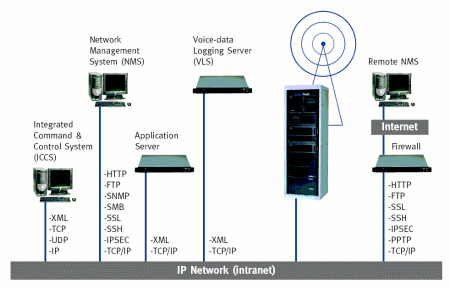“Real-time” carrier-grade Linux powers Dutch soft-switch
Oct 23, 2006 — by LinuxDevices Staff — from the LinuxDevices Archive — 11 views Hard real-time capabilities helped MontaVista's carrier-grade Linux distribution become the preferred OS for a Dutch network equipment provider (NEP) specializing in standards-based platforms for private military, police, fire, ambulance, and airport radio networks. Rohill's TetraNode Exchange (TNX) soft-switch is available in CompactPCI and AdvancedTCA models.
Hard real-time capabilities helped MontaVista's carrier-grade Linux distribution become the preferred OS for a Dutch network equipment provider (NEP) specializing in standards-based platforms for private military, police, fire, ambulance, and airport radio networks. Rohill's TetraNode Exchange (TNX) soft-switch is available in CompactPCI and AdvancedTCA models.
Rohill used MontaVista's Carrier Grade Edition 4.0 product in the TNX, MontaVista says. The standard 2.6.18 Linux kernel recently gained millisecond-level real-time capabilities, according to developer services provider TimeSys. However, Rohill required real-time interrupt response times of 100 microseconds.
According to MontaVista, Rohill's TNXs were previously based on Wind River's VxWorks RTOS (real-time operating system) and commercial-grade Linux distribution. On its Website, Rohill calls “real-time Linux” the preferred OS for its TNX devices, because it is said to offer “the best compromise between stability and security.”
Rohill also notes that Linux is well-supported by IT outsourcing firms, supports CompactPCI hardware well, and is championed by major TEMs (telecommunications equipment manufacturers) that include Nokia, Alcatel, and Siemens.
Rohill's TNX
Rohill's TNXs can be used in single base station configurations, or connected via an IP (Internet protocol) network to form a digital mobile communications network backbone. Based on open standards such as CompactPCI and AdvancedTCA, the TNXs were designed to be “easily scaled” into a nationwide network, according to the company.

Rohill TNX typical usage
(Click to enlarge)
About MontaVista CGE
MontaVista says its Carrier Grade Edition (CGE) Linux product offers hard real-time capabilities, advanced clustering, and a broad range of hardware support. Other touted features and benefits include:
- Kernel hardening to better tolerate hardware defects and to offer better network security
- Conformance with “all important open standards,” including OpenAIS, OpenHPI, and OSDL v2.0
- Support for ATCA platforms from Intel and Motorola, among others
- Serviceability, availability, and management features, including Ethernet aggregation and failover, and RAID1 and DRBD (“network RAID1”) disk mirroring support
Rohill's director of research and development, Bert Bouwers stated, “We turned to MontaVista Carrier Grade Edition because it provides a fully supported, tested, and documented distribution of Linux with hard real-time and clustering features built into the kernel.”
Bouwers adds, “The migration path from commercial-grade Linux to MontaVista CGE Linux has been completed within two months. The source code of the core software remained identical — we only had to add certain MontaVista enhancements. This has resulted in truly improved system performance without sacrificing the open architecture of Linux.”
Dan Cauchy, director of product management for MontaVista, stated, “There is still some uncertainty in the market over the ability of Linux to meet embedded developers' need for hard real-time performance and rock-solid stability. Rohill's decision is testament to the enhanced performance of our Carrier Grade Linux.”
Availability
Rohill's TetraNode eXchange products running MontaVista CGE Linux, and supporting hardware and software extensions for private mobile radio networks, are available immediately. MontaVista Linux Carrier Grade Edition 4.0 is also currently available.
This article was originally published on LinuxDevices.com and has been donated to the open source community by QuinStreet Inc. Please visit LinuxToday.com for up-to-date news and articles about Linux and open source.